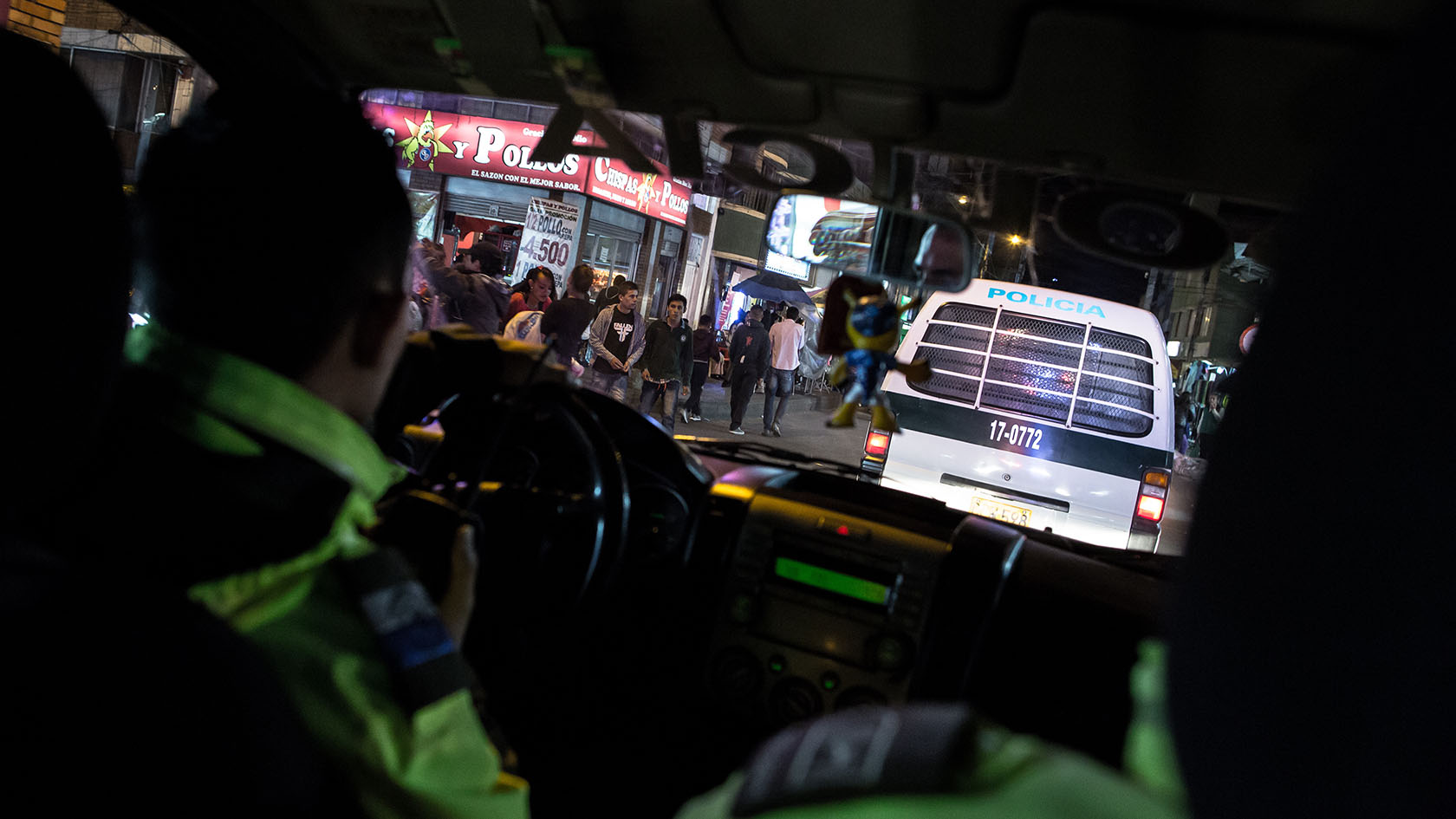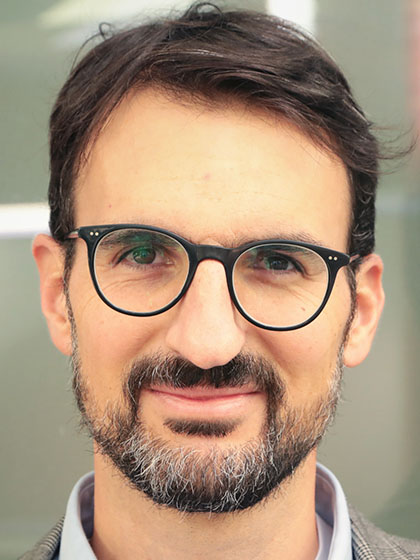Getting to the Roots of Violence

“Plata o plomo” – silver or lead. This is what the former Colombian drug lord Pablo Escobar says in a scene in the Netflix series Narcos. What he means is if you don’t cooperate (and take the bribe), you’ll be shot dead. And so, throughout the series’ runtime, we see many of Escobar’s adversaries get killed. But this didn’t just happen on screen: the real Escobar is said to have been much more violent in the 1970s and 1980s than the figure portrayed in the Netflix film.
Cities in Latin America are still some of the world’s most violent places today – even though Escobar died a long time ago and the era of the all-powerful drug lords is over. Surprisingly little is known about why this is the case. There are now some indications that drug trafficking isn’t the main cause of the excessive violence. “Drug trafficking has increased in Colombia in recent years, but the level of violence has declined,” says Enzo Nussio, who has been researching what triggers the cycle of violence in Latin America for many years. What’s more, Colombia was a violent country even before drug trafficking started roughly four decades ago. “And the examples of Bolivia and Peru show that you can also have drug trafficking with largely no violence.”
Why are some regions of the world dominated by violence, yet elsewhere people live relatively peaceful lives? Nussio intends to spend the next five years working with three to four staff to find the answers to this question. The researcher has been awarded an SNSF Consolidator Grant for his project on violence reduction.
Bashing each other’s heads in
The numerous documentaries and series on TV and streaming platforms imply, at least implicitly, that evil individuals are the root cause of the violence. For example, they show Pablo Escobar threatening his opponents with a face full of rage or sanctioning the murder of former close associates in cold blood. Yet Nussio is certain that there are structural causes behind the violence. For his research, the 44-year-old traveled to Colombia to interview dozens of people who have fought in the country’s civil war (see box). “If they’re persuaded to lay down their weapons, then thousands of others are ready to take their place.” The same applies to the drug lords: if Escobar hadn’t seized power, someone else would have done so. In other words, it’s not individual people but specific circumstances that lead to violence. But what are these circumstances?

Protecting people from violence, is one of the most important tasks of countries.
Outside his office, Nussio has hung up an A3-sized poster. “Urban violence reduction: Bogotá as success and future test case” it says. And the question is: why is the level of violence decreasing in certain cities in Latin America, including Bogotá? Colombia’s capital is now seeing six times fewer murders than it did in the early 1990s. Nussio sums up the key question that has always fascinated him: “Does a trend like this just happen spontaneously, or can you influence it?”
He thinks that previous attempts by academics to answer this question have been unsatisfactory. There are a whole host of possible explanations, suggesting that violence is minimized by certain macro trends. This is the argument made by historians, for example, when they explain why we here in Switzerland no longer bash each other’s heads in like people used to in the Middle Ages – nation building, modernization, democratization or reduced inequality are among the trends mentioned.
“But most of the findings from such research are depressing,” says Nussio. “Ultimately, they suggest that there’s not a great deal we can do, and it may take hundreds of years before the violence subsides.” And Nussio is also skeptical about whether they’re accurate. As it happens, Latin American countries are more democratic and more economically developed than many others around the world.
Organized onion farmers
Research in criminology examines the issue of violence on a very different level. For example, it asks what the police need to do to make urban violence drop. Nussio has examined this and found some success: a campaign by the police that he followed managed to reduce violence in Bogotá. The police had put up posters on the 150 most dangerous streets in the city, listing how many criminals in each location had already been arrested. The fact that the campaign worked is viewed by the local authorities as a success, because it shows that there are easier and cheaper ways for the police to reduce the violence than having patrols on every street corner.
Nevertheless, Nussio explains how he felt frustrated afterwards because he also observed how the violence returned as soon as the posters came down. He realized that you need more than just posters to tackle not just the symptoms, but to get to the heart of the huge problem of violence. Enzo Nussio is now pursuing a new strategy. He wants to take a closer look at the way people live together in local communities. “The relationship between local and government organizations is a crucial factor,” he believes. He explains what he means by citing the example of the Juntas de Acción Comunal (JAC), of which there are thousands in Colombia. These are organized groups of civilians at a community level who have a great deal of influence in certain regions in Colombia. Some of them were formed for economic reasons. For example, in one village that he happened to visit, he met local people who had teamed up to form an association of onion farmers. The person at the head of this association may have even more power than the local mayor because almost all the people who live in the village are poor and depend on the onion trade.
Local organizations like these will cooperate with the government authorities to a greater or lesser extent. In some areas, there’s genuine animosity between civilian and government organizations. “The people in these places want less government, not more,” says Nussio. But there are also local communities in which the president of the local JAC works with the mayor to discuss what needs to be done to fix the potholes in the road. Nussio believes that this working collaboration between civilian and government organizations could be a crucial factor in reducing violence over the long term.
Combing through newspaper articles
First and foremost, the researcher needs information about violence in Colombia to test this hypothesis. And he needs a lot of it because ultimately he wants to document the ebbs and flows in the level of violence firstly at a local level and over the last hundred years. He can get some figures from the authorities, but he also wants to use machine learning to comb through digitized newspaper articles. He also intends to incorporate oral history from interviews with contemporary witnesses.
Once the information is obtained, it will be possible to make comparisons. It will be particularly interesting to examine the areas in which the level of violence has decreased over a specific period. This is where Nussio can explore further questions: what were the reasons for the decline? Were political decisions made, or had certain structures been put in place? Ideally, it will be possible to identify strategies that successfully reduced the level of violence in the past. Nussio says that a field experiment would then be conducted to test whether these strategies still work today.
But even then, will the local politicians and civilians follow the recommendations from his research? Nussio shrugs. “Protecting people from violence,” he says, “is one of the most important tasks of countries. If they fail to do so, this leads to great disenchantment.” Nussio will now set about analyzing the spiral of violence until 2030. “But,” he says, “this is really my lifelong project.”